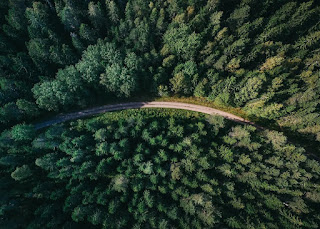As an enthusiast of all things science, I, Gerd Dani, director of FreeAstroScience.com and your friendly guide into the depths of scientific knowledge, am here to delve into a recent groundbreaking discovery that will make you rethink your understanding of trees and their role in our changing climate. Join me as we explore how trees, those silent partners in our fight against climate change, are finding it increasingly difficult to perform their critical function of trapping carbon dioxide in our warming and drying world.
Warmer Climates Challenge Trees in Capturing Carbon: A New Perspective on Carbon Footprint Offset
In collaboration with an expert team from Penn State, we at FreeAstroScience.com have delved into a recent discovery that disrupts our understanding of trees and their role as carbon dioxide sponges. As we continue pumping CO2 into our atmosphere and driving our planet's temperature ever higher, our green friends are facing an unanticipated difficulty. The warmer and drier climates are posing an unexpected challenge to the trees' inherent ability to trap the heat-trapping CO2, disrupting our conventional belief that trees can simply offset our carbon folly.
Climate Change Hinders Trees' Carbon Sequestration Role: A Deeper Dive
Trees, through photosynthesis, act as our natural CO2 absorbers, mitigating our carbon footprint. However, they too have their limits, especially under stressful conditions thrust upon them by climate change. In such situations, trees may shift from being absorbers to emitters of CO2, a process known as photorespiration. Researchers have discovered that the rate of photorespiration significantly heightens in warmer climates and intensifies as temperatures escalate, particularly in subtropical areas.
Climate Change Impact on Carbon Offset: Exploring New Strategies
This revelation poses implications for our climate and our strategies against rising carbon levels. Currently, plants are absorbing around a quarter of the CO2 we emit. Regrettably, this may decrease as climate change intensifies. Therefore, reassessing our carbon offset strategies and investing in alternative solutions becomes a necessity in light of our changing climate.
Probing Into Tree Photorespiration: Past, Present, and Future
The research team keenly analyzes isotopes in wood samples from various climates and conditions across the globe to understand photorespiration. This innovative technique enables us to predict future tree responses to climatic conditions and learn from past ones, guiding our climate change coping strategies.
Conclusion: Reassessing Our Green Strategy
Conclusively, the new study unravels a complex dynamic between trees and our changing climate, highlighting how trees are struggling to capture CO2 in warmer and drier climates. As these changes take place, it's time to reassess our approach to carbon offset and explore innovative solutions. Together, through informed science and action, we can navigate towards a more sustainable future.
Reference: Lloyd MK, Stein RA, Ibarra DE, et al. Isotopic clumping in wood as a proxy for photorespiration in trees. Proc Natl Acad Sci USA. 2023;120(46):e2306736120. doi: 10.1073/pnas.2306736120


Post a Comment